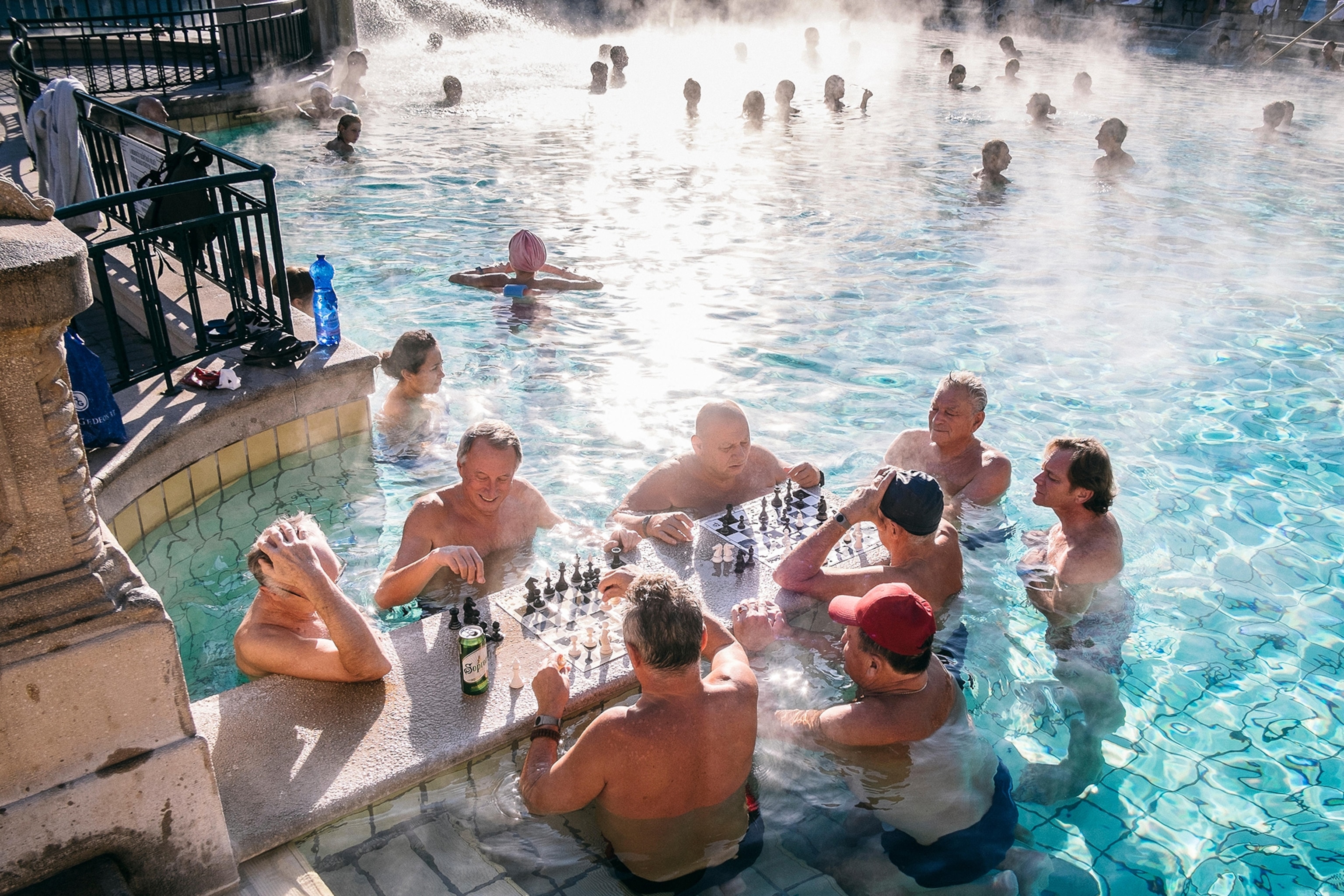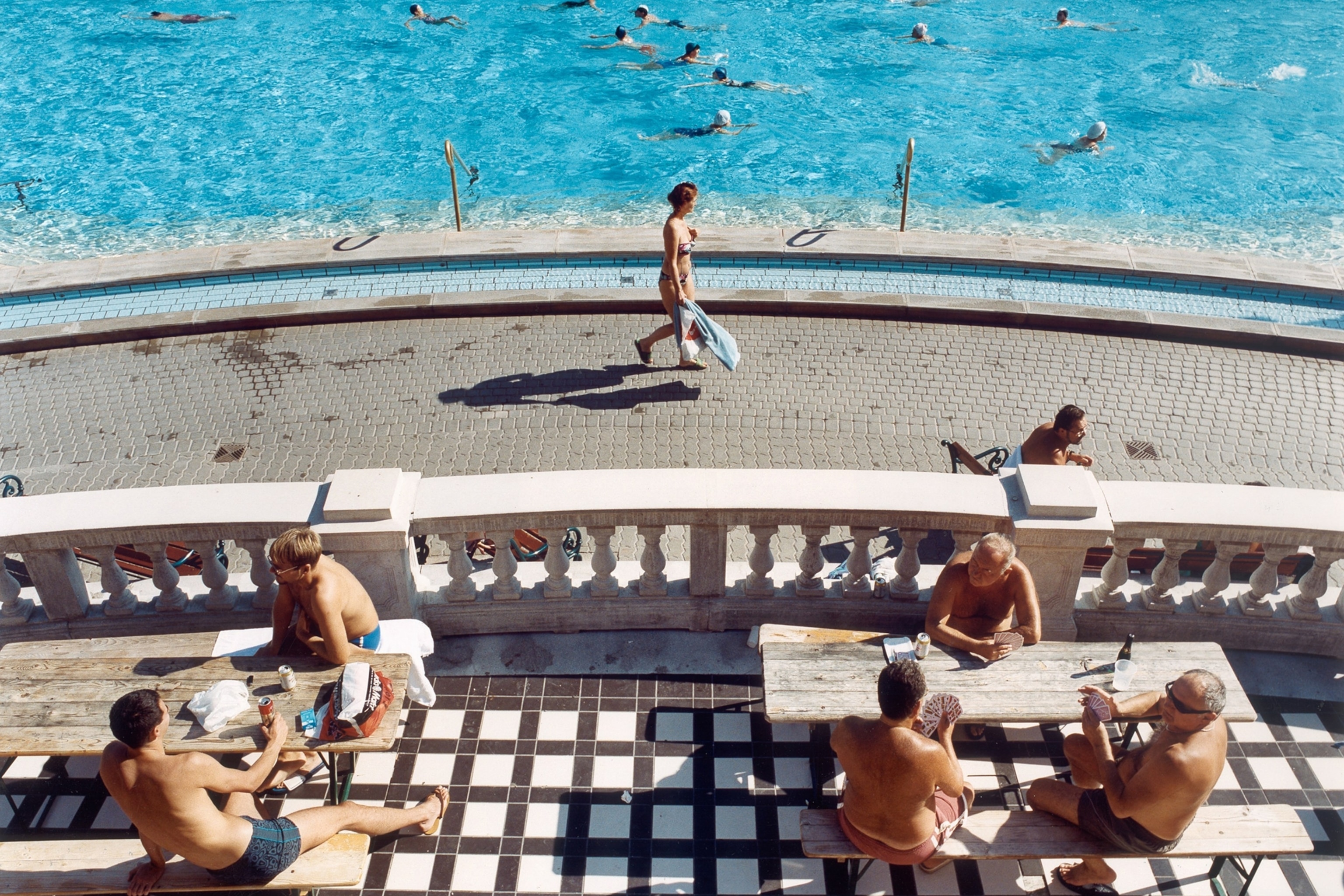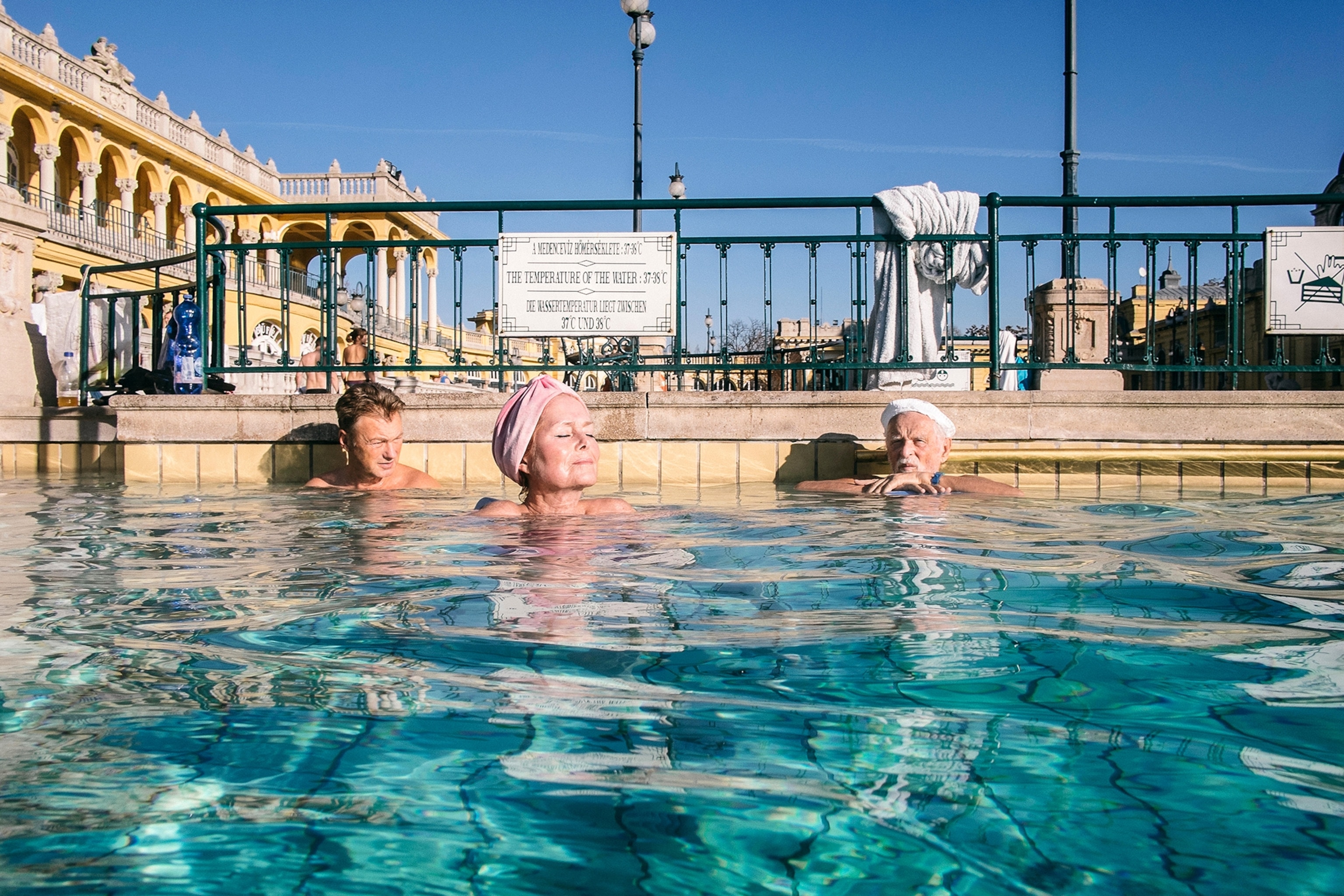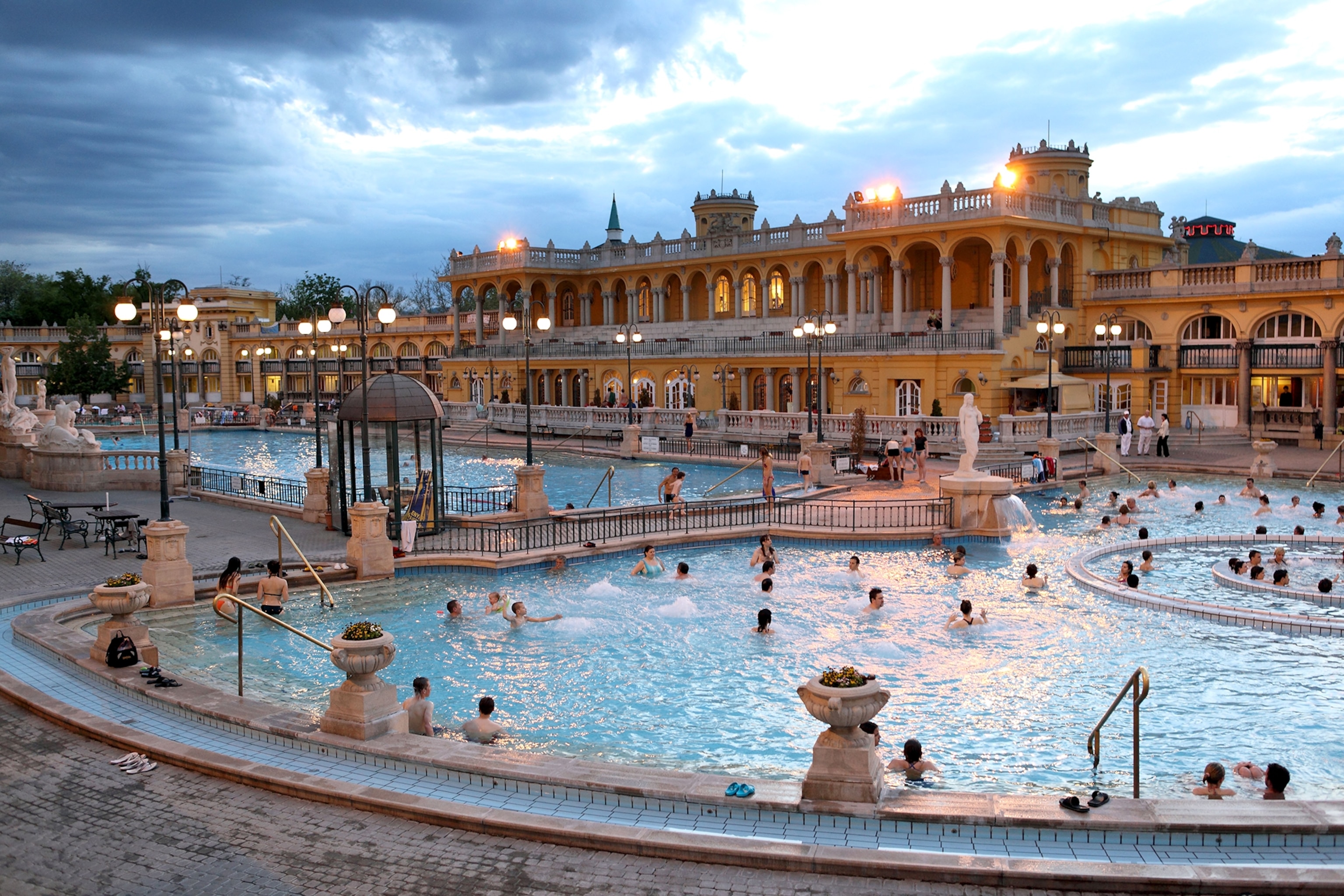
By Night, Budapest's Baths Host Raging Parties
"Sparties" may be a new addition to this city's nightlife scene, but Hungary's bath culture has roots in antiquity.
Thumping bass echoes over the heated pools of Budapest's neobaroque Széchenyi Baths. Bubbling thermal water offsets the chill of the evening air, disco lights flash in shades of pink and purple, and the DJ spins against the backdrop of shouting revelers. Sipping a mojito in a whirlpool while surrounded by English-speaking backpackers, it’s hard to imagine the baths as a place of healing. Stock images of the Széchenyi depict elderly Hungarian men playing chess in the steaming water, but on Saturday nights, 20-something Brits and Australians flood the ancient chambers for exuberant bashes.
"Sparties" may be a relatively new addition to Budapest’s vibrant nightlife, but its baths have served countless domestic and foreign visitors over the centuries, from the spring-filled thermae in the Roman city of Aquincum (today’s Óbuda neighborhood) to the dome-covered hammams constructed by the Ottomans during their 150-year occupation of Ancient Buda. The city’s reputation as a spa haven culminated in the late 19th and early 20th centuries with the construction of the Széchenyi Baths, one of the largest public complexes in Europe, and the stained glass- and Zsolnay tiled Gellért Thermal Baths. Today, however, Budapest still claims the title, “City of Spas.”
There are over a hundred geothermal springs located in Budapest alone. This concentration of thermal water can be attributed to the Earth’s crust being relatively thin in the Pannonian Basin and a geological fault line, marked by the Danube River, which runs from north to south, splitting the capital into hilly Buda and flat Pest.
When the Knights of the Order of St. John constructed a hospital near the site of the Lukács Baths in the 12th century, the city’s thermal water began to earn its medical reputation. In the leafy courtyard of the Lukács, you can still find thank-you placards engraved into the marble from patients who were allegedly cured by the sulfurous water.
Not all springs are created equal, however. Each comes with its own cocktail of mineral content said to cure a unique set of ailments by bathing in or ingesting it. This so-called curative water can be bought by the glass or canister from one of the drinking halls located just outside the Széchenyi, Rudas, or Lukács baths. The Juventus fountain near the Rudas is thought to have anti-aging properties, while the water that’s brought up from the wells running under the Széchenyi is said to help with symptoms of gout. Some believe bathing can also aid a variety of conditions from rheumatism and arthritis to spinal deformity and discus hernia, prompting some Hungarian doctors to prescribe the baths as treatment.
Budapest’s beautiful baths have also historically been about pleasure. The Gellért Baths expanded its complex in the 1920s to include Europe’s very first wave pool, complete with one of the first wave machines in the world. Today, most of the baths have their own collection of recreational outdoor pools with whirling corridors and massaging bubbles.
- National Geographic Expeditions
After centuries of evolution, Budapest’s baths still echo each era today, from the octagonal pools of the Király or Rudas baths to the fin de siècle grandeur of the Gellért. While still a place of healing and relaxation, the thermal baths have also become a place of hedonistic revelry after closing the doors for the day.
Jennifer Walker is an Anglo-Hungarian writer based in Budapest, Hungary, covering Central and Eastern Europe. Follow her on Twitter @JDWalkerWriter and Instagram @jenniferdeborahwalker.









